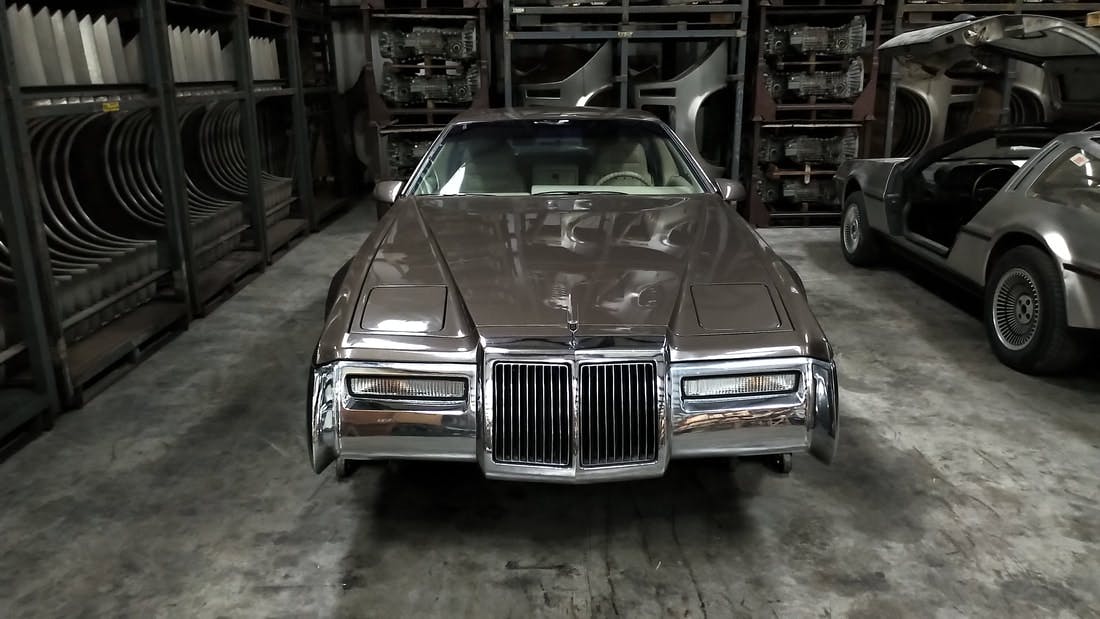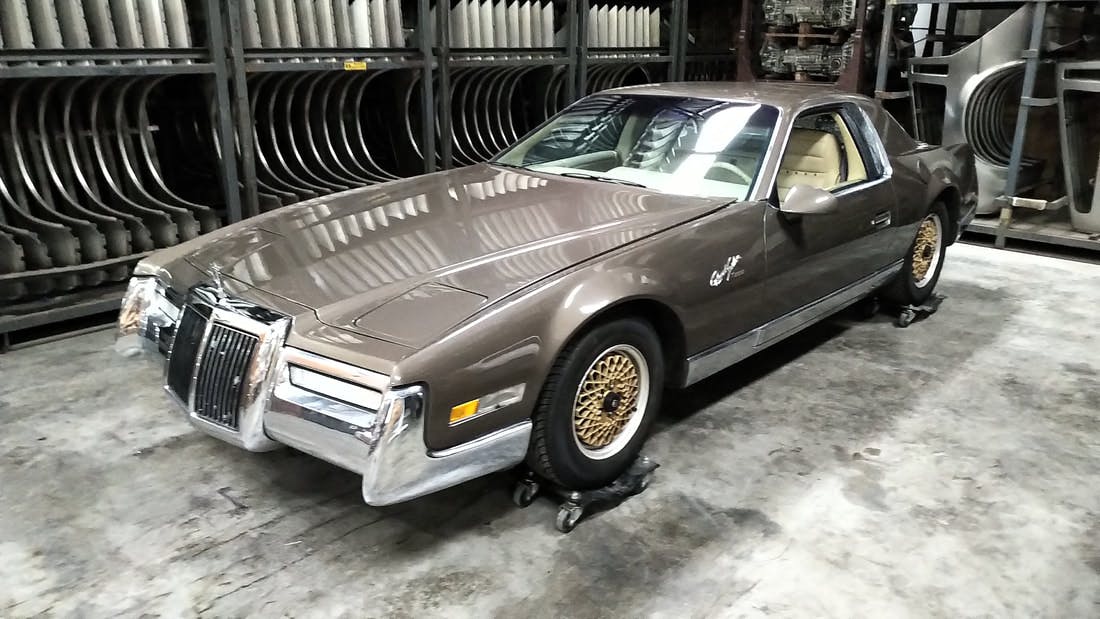Don Johnson, designer of the Zimmer Quicksilver, finally gets a digital spotlight
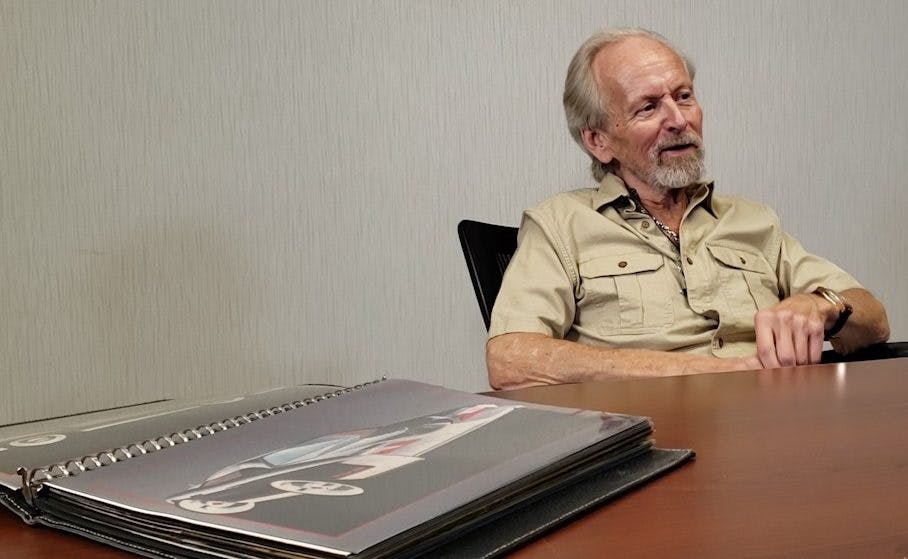
Don Johnson is an icon of the 1980s, but not the one from the TV show that folks of a certain age fondly remember. Indeed, D.A. “Don” Johnson isn’t a fictional character; he is a designer from the Bill Mitchell school at General Motors. Don, however, arguably made his most profound impact in the Malaise Era, a time when relatively disappointing Stingrays, Rivieras, and Firebirds failed to inspire him. One of his mold-breaking visions made production, thanks in part to the Zimmer Motor Cars Corporation.

The design came to be known as the Zimmer Quicksilver, a unique luxury sports coupe loosely based on the Pontiac Fiero. Unlike so many other Fiero conversions of the era, Zimmer Motor Cars took full advantage of the Pontiac’s modularity by engineering an entirely new body (save for glass) that elegantly draped over Zimmer’s pièce de résistance: a massive, 16-inch wheelbase extension between the front axle and cowl (a.k.a. dash-to-axle) which fundamentally altered the car’s demeanor.
Like peanut butter and jelly, the combination of Don’s design with Zimmer’s engineering was a natural fit. No longer a tidy, mid-engine sports car of humble origins, the Quicksilver adopted a certain grandeur. More to the point, since it was based on the flexible Fiero, the car is quite likely the most integrated, most appealing implementation of the neoclassic theme that defined Zimmer design.
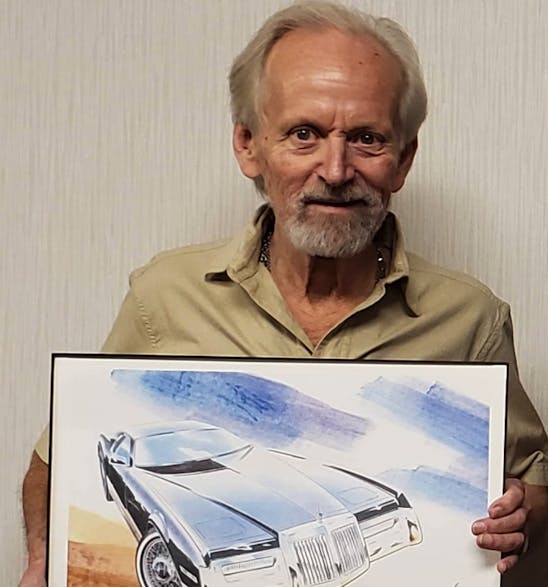
Don’s vision for a luxury sports car was originally intended for the Cadillac brand, but his ideas fell upon deaf ears at General Motors. He originally proposed the project as a Cadillac based on a Corvette chassis. It bears mentioning that this template likely would have fared better for Cadillac than the front-wheel-drive, star-crossed Allanté, introduced just a few years later. Zimmer shared his enthusiasm, however, as Don tells us in an interview by the Zimmer Registry. Sit back, relax and enjoy this comprehensive deep dive:
Plenty of automotive experts consider Zimmer’s Quicksilver “just a Fiero” under the neoclassic skin. I would challenge that characterization. Even leaving aside the extensive chassis modifications, Zimmer paid attention to details, adding a proper glove box where GM implemented a vinyl pouch for Fiero owners. Don’s design stands on its own, too, as only prolonged stares at the rear glass give it away as a vehicle of Fiero-like origin.
View this post on Instagram
As someone who once daily drove a Quicksilver while giving it a light restoration, I am admittedly a little biased toward it. The ridiculous amount of attention it garnered everywhere from trips to the grocery store to Houston’s Cars and Coffee gatherings was mind-blowing. I drove the McLaren Senna in the same places and people could not care less. Case in point, upon leaving the above Instagrammed Cars and Coffee moment, a middle aged man in the mall parking lot chased the Quicksilver down, leaving his family’s jaws a-droppin’ as he abandoned them. He even plowed through a painfully-stiff hedge to catch me before I left the property. There he was, tending to his hard-fought scratches, just to get a closer look at a Zimmer Quicksilver. I just don’t see people doing that for Fieros.
All good fun, but sadly I was neglecting the poor thing. A dead fuel pump and rusty tank sidelined it, which compounded the fact that I had too many projects. Enter James Espey, founder of the Zimmer Registry, who made an offer the Mehta family couldn’t refuse. I was sad to see it leave, but I knew it was going to a great home. I just wasn’t expecting that home to be so darn magnificent. That’s because James is also a VP at the nearby DeLorean Motor Company, a place that lets “my” little brown Zimmer live amongst the stainless steel perfection that is the world’s premier DeLorean’s restoration facility. But that’s not what makes James such a stand up gent: his act of finding Don, meeting him at Detroit’s famous Woodward Dream Cruise, and filming the YouTube video above speaks to his passion.
I am beyond thrilled to follow James’ progress on the Facebook group I initially started for the community, but it doesn’t end at simply documenting the Quicksilver’s designer for everyone to enjoy. It’s clear that James’ stunning level of aftermarket production knowledge filters down from the popular DeLorean to the lowly Zimmer sports coupe.
James’ next project for the community was a culmination of years of hard work.
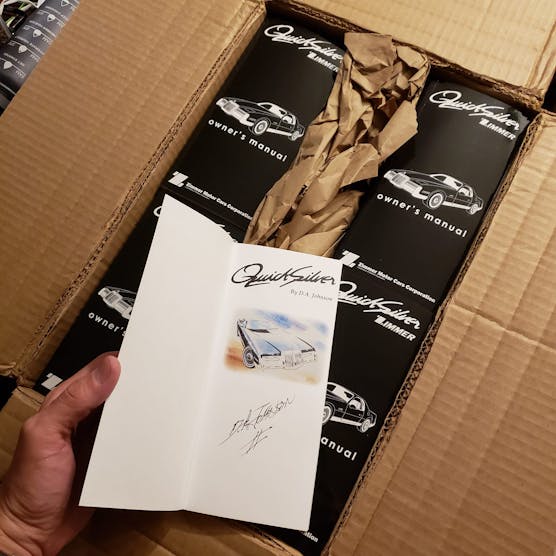
And here it is: boxes of reproduction Owner’s Manuals for the Zimmer Quicksilver. I started things off, spending almost a year searching for a used manual on eBay. I left it in the Quicksilver’s bespoke GM-doesn’t-care-but-we-certainly-do glovebox, wished James the best of luck with it, and promptly forgot about its existence. James was not content with my efforts, and he reproduced the entire owner’s manual (even my missing cover page) and got Don to sign it (!). And he signed not just one copy, but every copy he printed here in these United States of America. James is now selling them for a modest $30 with free shipping. That can’t be much more than the cost to print these in the first place, so to say we need more folks like James in this hobby is an understatement.
I can’t wait to see what a future Zimmer Quicksilver parts catalog holds for owners of this extremely limited production vehicle. Without James’ efforts to document the past and reproduce it for everyone to enjoy, the Quicksilver’s backstory and unique parts could be lost to history. The vision of one man, D.A. “Don” Johnson, now has a digital footprint. While Don’s work outside of General Motors extends beyond the Quicksilver, his collaboration with Zimmer was a high watermark for innovative takes on famous design cues of the past. The 1986–1988 Quicksilver was indeed a work of coachbuilt quality, made in an era when safety and cost engineering seemingly eliminated such creativity. By all rights, given the tough times, it should have been an era when stand-alone designs (with almost no business connection to the platform beneath) were pipe dreams.
Don never gave up. Something tells me James won’t either.
